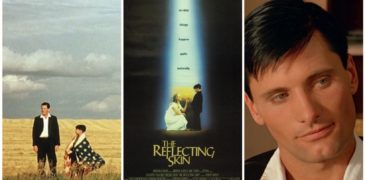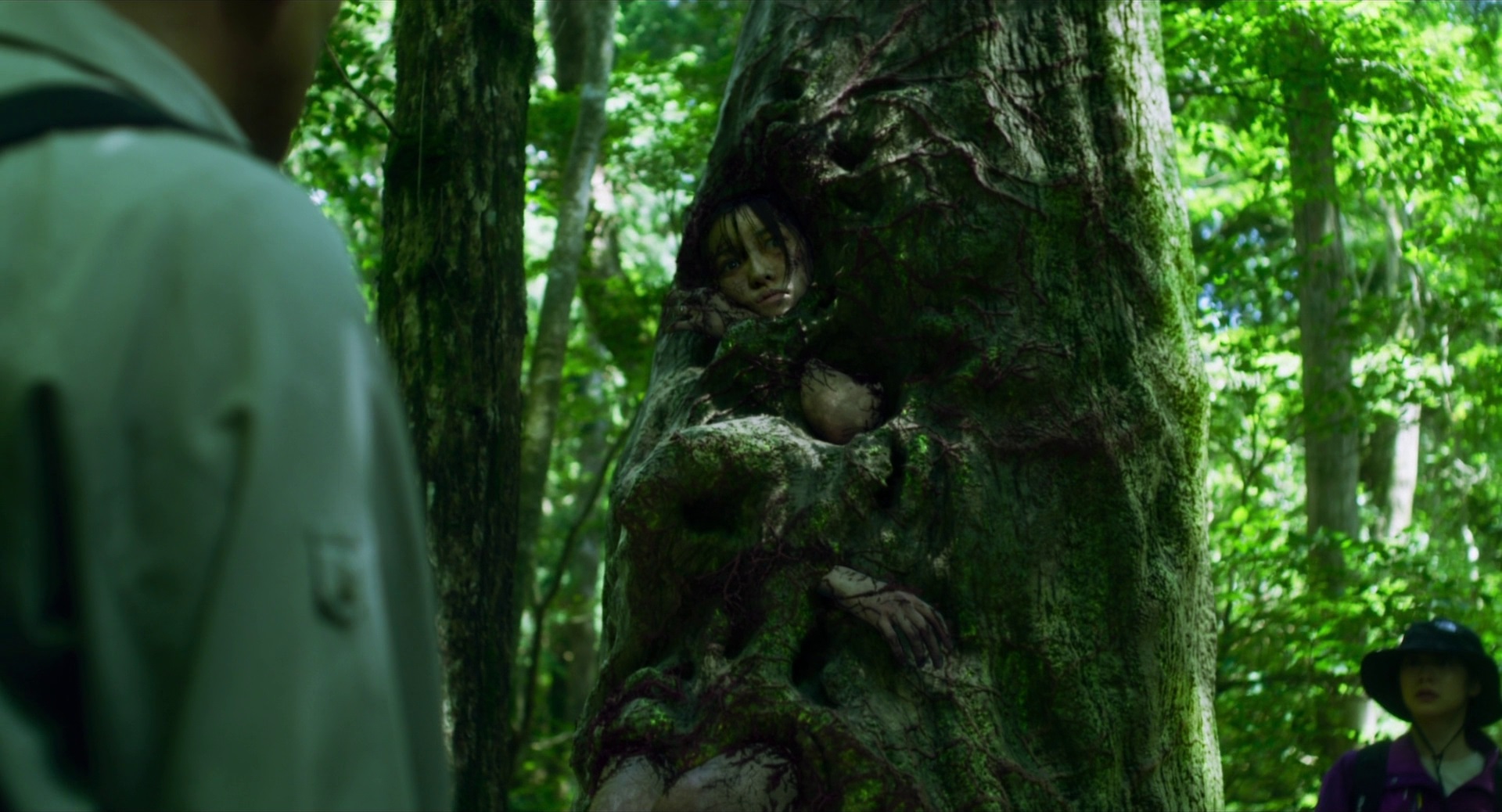
I distinctly remember when it was announced that Takashi Shimizu, one of the most consistent contributors to Japanese horror over the last two decades, was going to direct a film based on the infamous Aokigahara forest. It came as a surprise to those of us who were still waiting on a similar project to come to fruition; an adaptation of The Suicide Forest comic book by El Torres was announced a few years prior, with Hideo Nakata (another big name in the realm of J-horror) set to direct and Roy Lee serving as a producer. This particular project was announced back in 2012, so it’s safe to assume that it might never see the light of day. However, with such an established historical reputation for being one of the world’s most-used suicide spots, resulting in an inevitable affiliation to the supernatural, it was only a matter of time before another filmmaker took the topic at hand and ran with it, which is exactly what Shimizu-san did.
While this can technically be viewed as a stand-alone film, it must be noted that it is part of Shimizu-san’s “Village of Horror” trilogy which began with last year’s Howling Village and will end with his upcoming Cow’s Head Village. The plot-lines are not directly connected (as of yet?) but there is a shared-universe Easter egg that appears in this second installment which loosely ties the events together. Having only mildly enjoyed the first film in the series, I was nervous about this one being just “more of the same”. You see, Howling Village was without a doubt a very solid and ambitious horror film, but for some reason I just wasn’t a good audience for it, despite having enjoyed many aspects of it. Perhaps my own reckoning clouded my ability to fully enjoy what was produced, but I was thrilled to be watching a new Shimizu film regardless. With Suicide Forest Village, I found myself feeling just as excited regardless of my previous perspective.
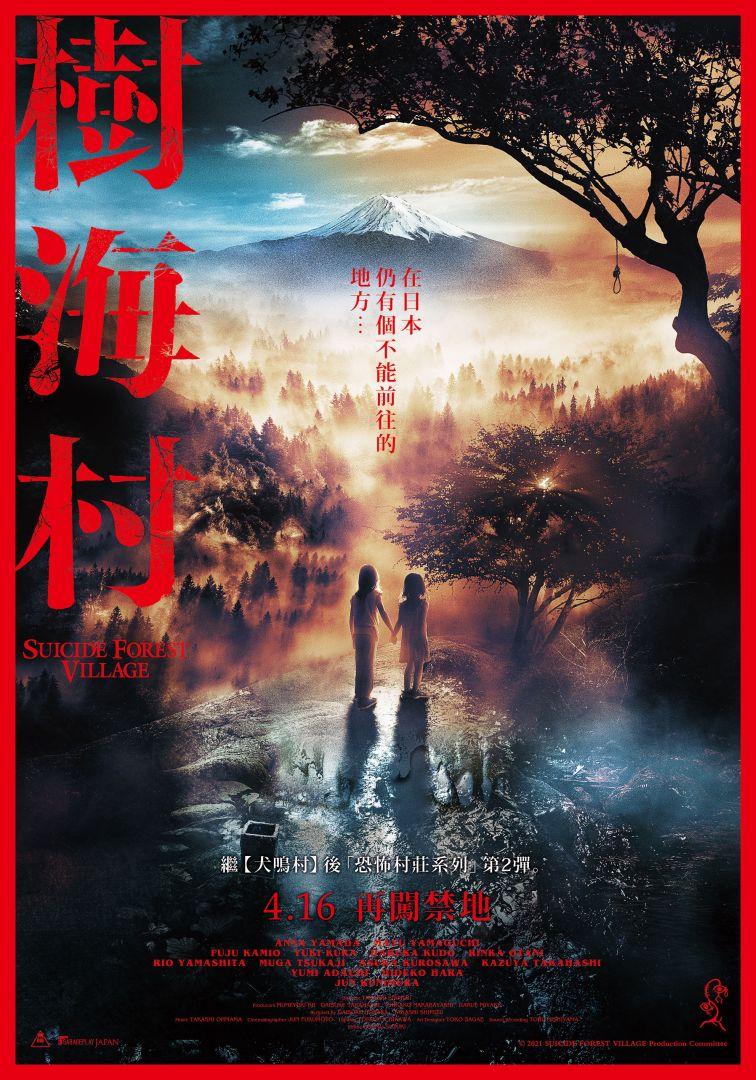
The film opens with a man and a young woman driving by a forest. Whether this woman is his daughter or simply an apprentice is never verbally confirmed, but I would assume the latter. You see, this man, who Japanese film fans will instantly recognize as Jun Kunimura, is some sort of forest ranger, and he explains to the young woman that he sees many people come to this forest with the intention of never being found. While the name Aokigahara is never mentioned, references to the Mount Fuji area and the lugubrious visitors it receives makes it abundantly clear that it’s the suicide forest. But we all already assumed that from the title, right? He slams on the breaks when two little girls come stumbling out of the forest and onto the middle of the road. The look of fear on their dirt covered faces is unmistakable, so he quickly exits the car to help them, despite their resistance. What on Earth are two children doing in a place like this?
After we’re greeted to the title screen, which is accompanied by a wonderfully ominous choir tune, we meet the two little girls again, except this time they’re all grown up. The younger sister, Hibiki, is a bit of a recluse and spends most of her time on the internet. She is among the numerous viewers who are watching an internet personality live stream her venture into the infamous forest. This scene mirrors the found-footage style opening sequence from Howling Village, where the video takes a turn for the worst. Later, Hibiki’s older sister Mei reminds her that they agreed to help their newly-wed friends move into their new house. As fate would have it, a strange old box is found underneath the house by the group, and it doesn’t take long before the body count begins and random disappearances to take place. Hibiki soon realizes that the box has a connection to her past and the village hidden deep within the suicide forest.
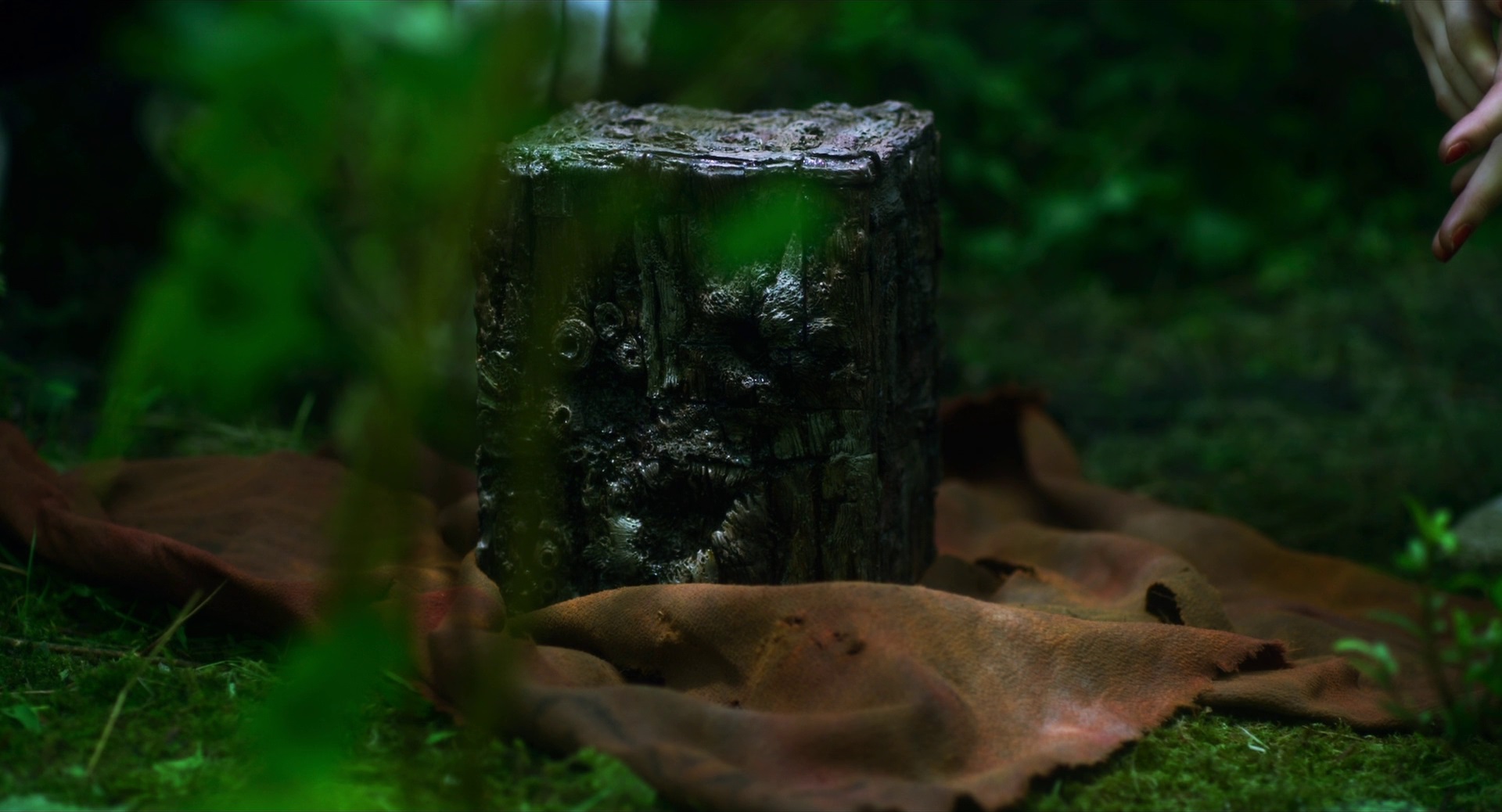
Although there are many similarities between this film and Howling Village (they explore similar themes and are visually/tonally alike), it never felt derivative. Instead, the film feels appropriately part of the same realm as the former, which was no doubt Shimizu’s intention. The Easter egg that I mentioned above is clear as day, blink and you still won’t miss it. It will only feel random or confusing to those who have not seen the first film, but I stand by my statement about this working as a standalone film. With these similarities in mind, however, I’m surprised at how much more I enjoyed the overall viewing experience compared to Howling Village. It felt as though the things Shimizu set out to do in that first film were better fleshed out here, or better realized. This is not a fair statement however; entertainment is subjective after all, and I’m sure another viewer out there may have the opposite opinion. This flick just seemed to hit a lot more of the right notes for me personally, and although one may think it had something to do with lower expectations, I had actually read an acquaintance’s thoughts on the film prior to my viewing, which only heightened them.
The scares, although sparse and infrequent, often caught be by surprise here. They’re definitely not the most original in the genre (and in fact, if you’re a J-horror veteran you’ve more than likely seen a lot of similar ones), but Shimizu’s skillful execution of each set piece really worked with the narrative he presented. One of the sequences that really stood out to me happens some time before the third act; Mei is traversing through the forest alone until she runs into a number of rather eccentric characters that we’re introduced to earlier. They work together to make their way out of the sea of trees, but are delayed by an unforeseen occurrence, which I won’t spoil here. I’m not saying that you’re going to have trouble sleeping after watching this film, unless of course you have a phobia of dead tree-people, but there is enough cleverness in the psychological aspects of the scares balanced by some gruesome and fantastical visuals that I think will please the target audience.
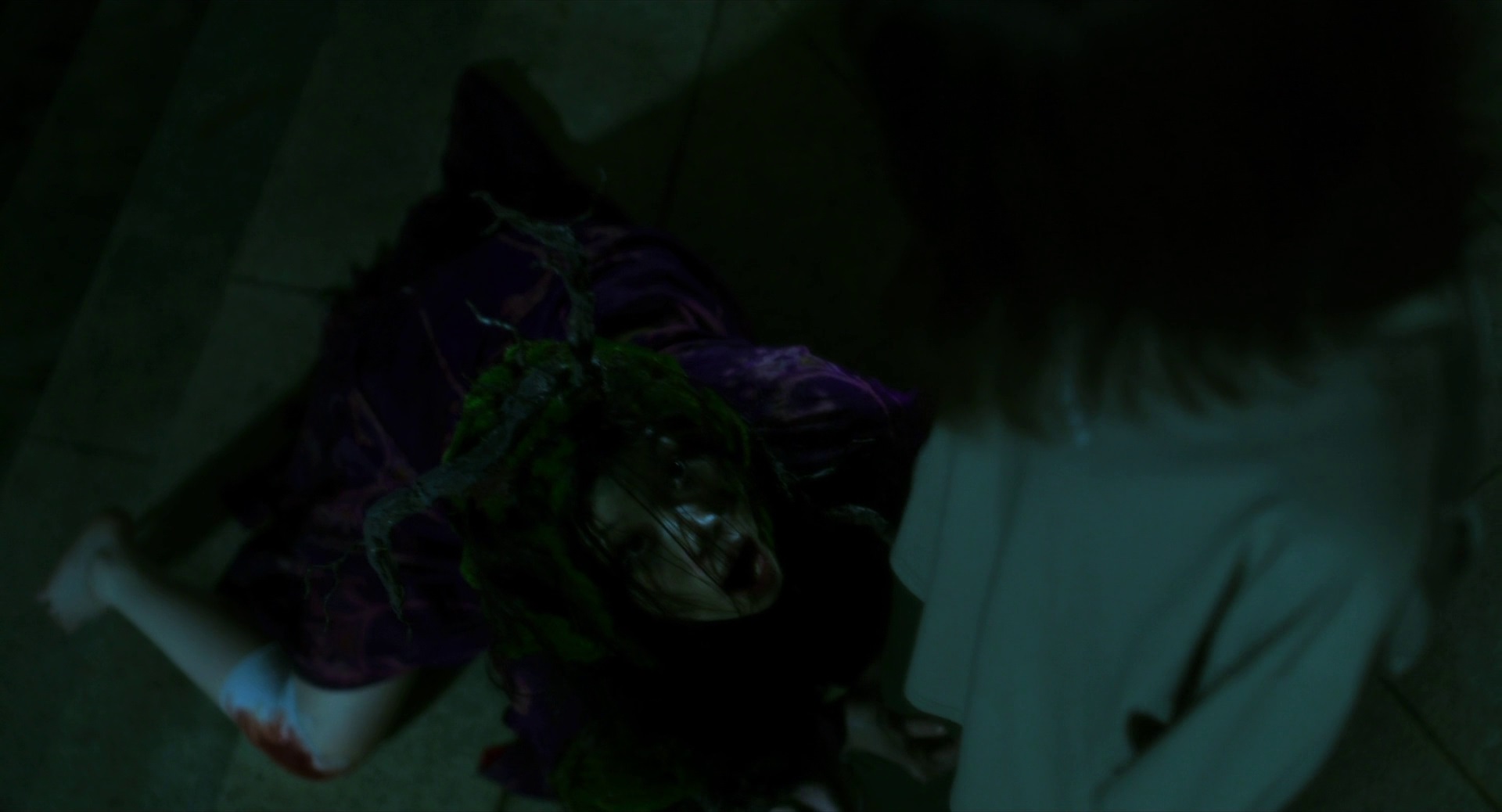
The story’s structure was a lot more linear than I expected from Shimizu-san, even though Howling Village was technically linear as well (until the ending of course). He’s done a number of linear films over the years, but I find that Shimizu tends to take a more ambiguous or empirical route when it comes to horror. There is a bit of vagueness to this film’s resolution, and it requires a bit more suspension of disbelief than the rest of the film, but I believe there are enough context clues throughout the narrative that will sufficiently aid even the most casual viewer; those who are well-versed in the genre won’t having any issues jumping to conclusions. This may be one of the only instances where, aside from the Easter egg, having seen the first film might actually provide a little more frame of reference. Let’s just say that Hibiki has some things in common with Kanae, the protagonist in Howling Village, but a verbal explanation is never provided to the audience. Sometimes it’s nice to not have everything spoon fed to you, right?
I am very much looking forward to the final chapter in this “Village of Horror” trilogy, and am hoping that my enjoyment of this film over the first one means that Shimizu-san is saving the best for last. Suicide Forest Village is far from my favorite out of Shimizu’s filmography, but it ranks much higher than titles such as Shock Labyrinth and Innocent Curse. Because Howling Village got a proper physical release by Epic Pictures in the US this past September, I’d wager to say that the possibility of Suicide Forest Village getting the same treatment is fair. If enough attention is brought to the franchise, we might even get the entire trilogy once it’s complete, but this is all just hopeful thinking. Suicide Forest Village would make a worthy addition to a collector’s library of Japanese horror, and will surely be appreciated by fans of the genre around the world. It is filled with an ample amount of grisly content, not unlike the cursed box that is found by the lead characters.
More Film Reviews
The original electrifying Evil Dead burst onto the horror scene in 1981 and wrapped its spindly tendrils around the throat of passionate horror fans worldwide, keeping us on the edge… Returning to the site of a hotel where the aboriginal people slaughtered a team of archaeologists, a new team set forth to find out the truth of what happened to… If childhood memories could be distilled into pure energy, they would probably seem as radioactive as the golden glow emitted from the spray-painted wheat fields of The Reflecting Skin. Otherworldly,… Why people remain in situations of domestic abuse can be difficult for outsiders to understand. That is because there are unseen, powerful forces that keep victims in dangerous, toxic relationships…. As a seasoned horror fanatic, I eagerly anticipated the 2023 release of director Gary Shore’s Haunting of the Queen Mary, expecting spine-chilling thrills and a captivating storyline. I grew up… Canadian writer/director Christopher Donaldson wants you to know that Ditched (2021) is supposed to be “that B-movie you accidentally missed in 1986”. Do not watch it hoping for a deep message…Evil Dead Rise (2023) Film Review: Maniacal Motherhood
Jungle Trap (2016) Film Review – Do You Know Where You Are?
The Reflecting Skin (1990): A Brief Examination of Vampires (and Other Bad Things) in Broad Daylight
Ad Lib Short (2022) Short Film Review
Haunting of the Queen Mary (2023) Film Review – A Disastrous Shipwreck
Ditched (2021) Film Review – Canadian Gore Horror

Your typical ghoul next door; film enthusiast, horror fanatic, J-horror nerd, aspiring horror host, and all around geek. Will likely be found cuddling with their cat and reading an old smelly book, or stuffing their face with popcorn at the cinema!


